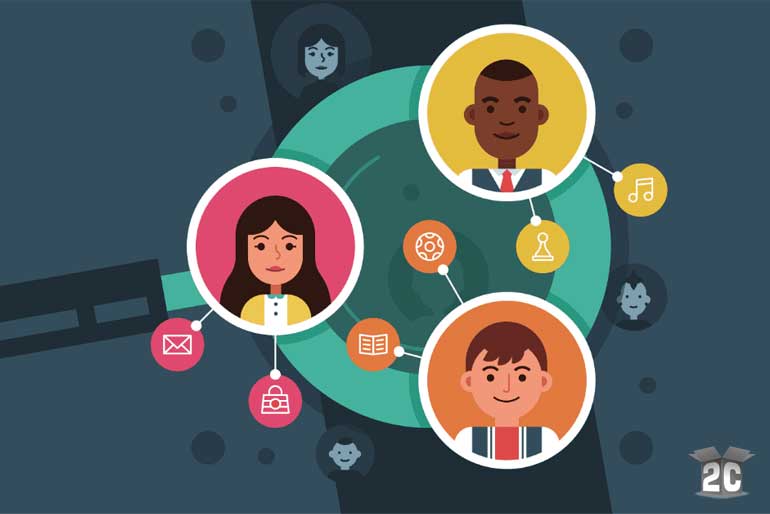
Defining Your Customer Persona: A Guide to Understanding Your Ideal Customer
When creating a successful business or marketing strategy, understanding your audience is crucial. Two concepts often discussed in this context are customer personas and target markets. While they are related, they serve different purposes and require distinct approaches. This article will guide you through defining your customer persona and explain how it differs from your target market.
How Customer Personas Differ from Target Markets
While a target market provides a macro view of your audience, customer personas offer a micro perspective. Think of it this way:
- Target Market: A group of people (e.g., fitness enthusiasts aged 25-45).
- Customer Persona: An individual within that group (e.g., “Fiona,” with specific goals, challenges, and preferences).
Both are essential tools, but personas provide the depth needed for personalized marketing and customer-centric decision-making.
What Is a Target Market?
A target market refers to a broad group of people or organizations that a business aims to reach with its products or services. This group is typically defined by general demographics, psychographics, and behaviors, such as:
- Age range
- Income level
- Geographic location
- Gender
- Occupation
- Lifestyle or interests
For example, a company selling premium athletic wear might define its target market as “fitness enthusiasts aged 25-45 who live in urban areas and value high-performance gear.”
While a target market helps you identify the overall segment you want to attract, it doesn’t delve into the specifics of individual customer needs, motivations, and challenges. This is where customer personas come in.
What Is a Customer Persona?
A customer persona, also known as a buyer persona, is a detailed, semi-fictional representation of your ideal customer. Personas go beyond demographics and describe an individual’s:
- Goals and motivations
- Pain points
- Preferences and habits
- Buying behaviors
- Background and personality traits
Unlike a target market, which provides a broad overview, a customer persona paints a vivid picture of an individual within that market, making it easier to tailor marketing messages, product features, and customer experiences.
Why Define a Customer Persona?
Defining a customer persona offers several benefits:
-
- Improved Targeting: You can craft marketing strategies that speak directly to the needs and desires of your ideal customer.
- Personalized Messaging: Personas allow you to create content that resonates on a personal level.
- Product Development: By understanding customer challenges and goals, you can design products or services that truly meet their needs.
- Efficient Resource Allocation: Personas help you focus your efforts on channels and tactics that are most likely to succeed.
How to Define Your Customer Persona
Creating a detailed customer persona requires research, analysis, and creativity. Follow these steps:
- Collect Data About Your Audience
- Use customer surveys, interviews, and feedback forms.
- Analyze website analytics and social media insights.
- Study your competitors and industry trends.
- Ask the Right Questions To define a customer persona, answer the following questions:
- Demographics:
- What is their age, gender, education level, and income range?
- Where do they live?
- Professional Background:
- What is their job title and industry?
- What skills or knowledge do they have?
- Goals and Motivations:
- What are their primary goals related to your product or service?
- What motivates them to take action?
- Challenges and Pain Points:
- What problems are they trying to solve?
- What obstacles prevent them from achieving their goals?
- Buying Behaviors:
- How do they prefer to make purchases (online, in-store, etc.)?
- What factors influence their buying decisions (price, quality, reviews)?
- Personality and Values:
- What are their interests and hobbies?
- What values or beliefs guide their decisions?
- Communication Preferences:
- How do they like to receive information (email, social media, blogs)?
- What tone and style of messaging resonates with them?
- Demographics:
- Compile the Information Organize the data into a coherent persona profile. Each persona should include:
- A fictional name (e.g., “Fitness-Focused Fiona”)
- A brief bio summarizing their background
- Key demographics and personal traits
- Goals and motivations
- Pain points and challenges
- Preferred communication channels
- Validate and Refine Periodically review and update your personas to reflect changing customer behaviors and market trends.
Example of a Customer Persona
Name: Fitness-Focused Fiona
Age: 34
Occupation: Marketing Manager
Location: Urban area
Goals: Maintain a healthy lifestyle and prepare for a half-marathon.
Pain Points: Limited time to work out and difficulty finding durable, stylish athletic wear.
Buying Behavior: Frequently shops online, values customer reviews, and looks for eco-friendly brands.
Communication Preference: Engages with brands on Instagram and subscribes to fitness blogs.
Conclusion
Defining your customer persona is a foundational step toward building a successful business strategy. By combining insights from your target market with detailed persona profiles, you can create tailored experiences that resonate with your audience. Start by asking the right questions, compiling the data, and continuously refining your approach to stay aligned with your customers’ needs.

